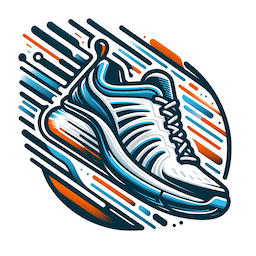How to Choose Running Shoes: What Does the Research Show?
Traditional thinking on picking the right running shoes has been challenged in recent years–but many still promote outdated ideas on finding the right fit.

Traditional thinking on running shoe selection has been challenged in recent years–but many still promote outdated ideas
Running is an amazing way to stay fit. And part of the appeal of running is that it’s simple–you don’t need fancy gear or really anything other than a good pair of shoes to get going. But finding a “good pair of shoes” can seem really complicated. How do you actually chose the right pair of shoes to run comfortably and pain-free?
Fortunately, the answer may be simpler than it appears. This post delves into the traditional thinking on choosing running shoes, recent research on the subject, and practical tips for making the best choice.
Traditional Thinking on Choosing Running Shoes: Pronation and Stability
If you’ve ever purchased shoes at a running store, you may have gone through the traditional shoe selection process. It often goes something like this: an employee watches you trot back and forth though the store examining the way your feet make contact with the ground before ceremoniously assigning you a shoe type, like the sorting hat at Hogwarts: “Over-pronator!” or “Neutral!” or “Supinator!”.
Traditionally, the selection of running shoes has been heavily based on the concept of pronation — the way your foot rolls inward when you walk or run. Pronation is categorized into three types: neutral pronation, overpronation, and underpronation (or supination).
- Neutral Pronation: Shoes designed for neutral pronation are generally well-balanced in cushioning and support.
- Overpronation: Overpronators often are recommended stability or motion control shoes. These shoes have more support on the medial (inside) part of the shoe to prevent excessive inward roll.
- Underpronation (Supination): Underpronators, who experience less inward roll, often are directed towards shoes with more cushioning to compensate for the lack of natural shock absorption.

Traditional thinking uses foot shape and pronation as the primary criteria for selecting running shoes, and many still advocate for this approach today. The problem is, while this approach makes sense intuitively, it's not the whole story and not well supported by research. Though pronation and foot anatomy can provide a starting point for the search for the perfect shoe, recent research shows there are other, far more important factors.
New Research on Running Shoes and Injuries
Recent research has begun to challenge and refine the traditional views on running shoes and injury prevention. A key finding is that comfort and proper fit might be more important than pronation type in preventing injuries.
Key Findings:
- The Importance of Comfort: A study published in the British Journal of Sports Medicine found that runners who chose shoes based on comfort had a lower incidence of injury.
- Reevaluating Pronation: Other research shows that choosing shoes based on foot shape and pronation is not an effective predictor of injury risk. The link between pronation and running injuries is less direct and more complex.
- Consider a Rotation: If you’re doing a lot of running, like training for a marathon, consider a rotation of different shoes. Research shows that using a rotation of shoes can help prevent running overuse injuries. This can even include using shoes with varying levels of support.
- Individual Needs Over General Recommendations: Every runner’s body and running style is unique. Hence, what works for one runner might not work for another, even if they have the same pronation type.
Practical Tips for Choosing Running Shoes
Given the shift in thinking on running shoe selection, here are some practical tips for selecting the right pair of running shoes:
- Prioritize Comfort: Choose shoes that feel comfortable from the start. Don’t rely on the “breaking in” process to fix any initial discomfort.
- Get a Professional Fitting: Visit a specialized running store where you can try out different shoes and evaluate the fit–but be wary of overly specific recommendations based on anatomy or foot-strike.
- Test Multiple Options: Don’t hesitate to try different brands and models, even in vastly different categories to figure out what is the most comfortable fit for you. What works for others may not suit you.
- Consider Your Running Terrain: Tailor your shoe choice to the typical surfaces you run on — road, trail, or track.
- Be Wary of Trends: Don’t get swayed by marketing hype or the latest trends. There have been some great innovations in shoe technology over the past several years, but don’t make that a primary consideration–stick with what feels right for your feet and running style.
- Listen to Your Body: Pay attention to how your body feels during and after a run. Discomfort or pain might indicate the need for a different type of shoe.
- Replace Shoes Regularly: Running shoes lose their cushioning and support over time. A good rule of thumb is to replace them every 300–500 miles, but durability can vary greatly from shoe to shoe and from person to person!
So to wrap it up, while the traditional thinking provides a basic framework for understanding running shoe types, recent research emphasizes the importance of individual comfort and fit. By combining these insights with practical tips, you can make a more informed choice that not only enhances your running experience but also helps in injury prevention. Remember, the best shoe for you is the one that feels right on your feet and complements your running style. And whatever running shoes you choose, we will always help you find the best price.
Happy running!

